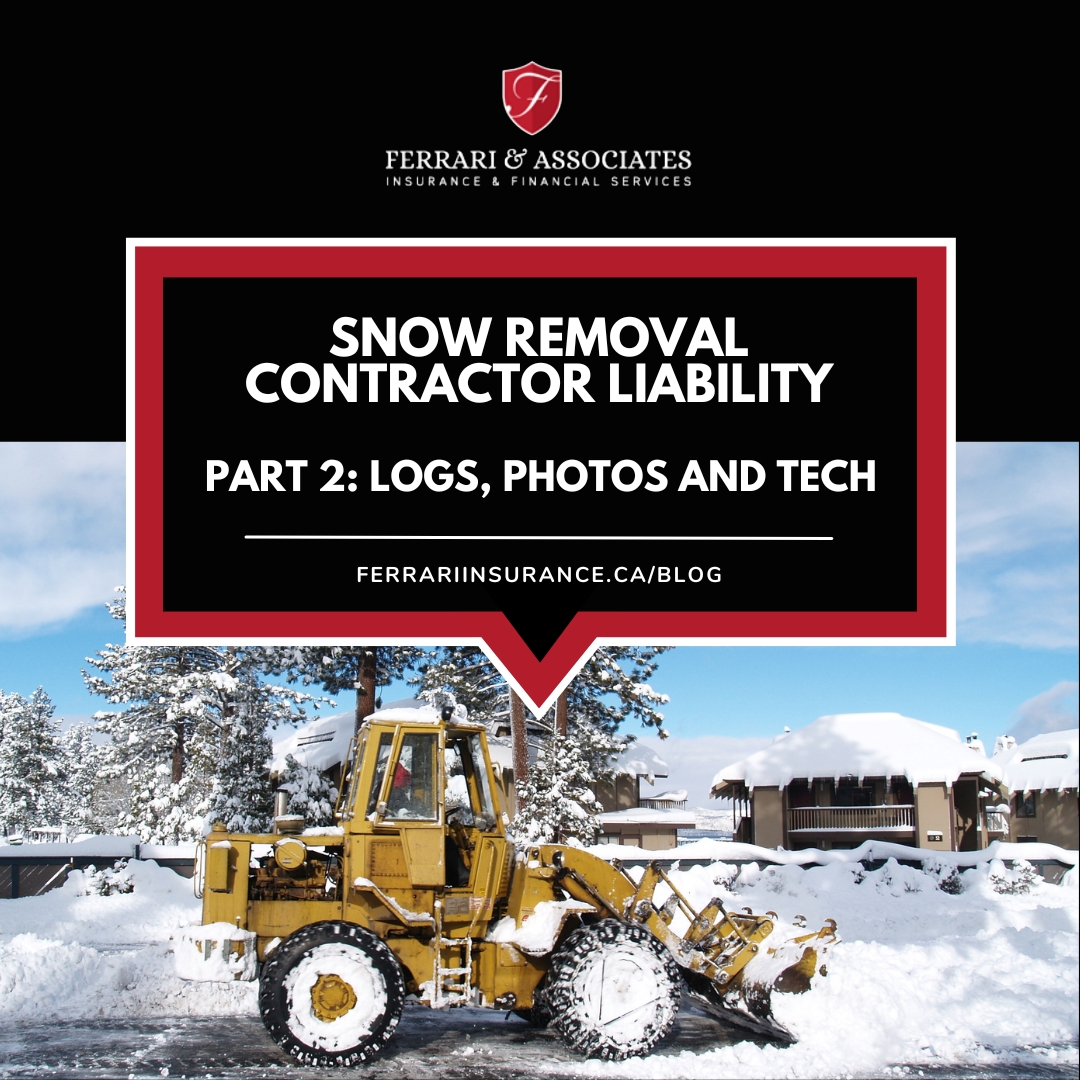Snow removal contractor documentation mitigates risk. This is part two of a three-part expert blog series aimed at snow removal contractors. Our first article provides an overview of the liability exposures contractors face during the winter months. It highlights contracts and the importance of annual inspections. In this article, our commercial insurance experts and Partners, Mike Di Pinto, Che Guerrera and Daniel Morra stress that documentation isn’t just an add-on but one of the most important defence mechanisms in court. This article explains the importance of logs, photos and using tech tools.
Snow Removal Contractor Documentation : 7-Year Logs
Partner Daniel Morra notes “the era of relying solely on handwritten logbooks is over. Today’s insurance carriers expect digital traceability, GPS-stamped photos, and real-time data. If you’ve been using manual log books, you should consider electronic formats now.”
Across Canada, snow removal contractors should retain snow logs for a minimum of seven years. This is not just a good practice; many insurers include it as a condition of coverage.
Logs should include:
- Arrival/departure times
- Weather and surface conditions
- Services performed (ploughing, salting, sanding, etc.)
- Equipment used and operator name
- Site issues or hazards encountered

In Edmonton, Alberta, a snow contractor faced a wrongful death suit in 2022 when a senior citizen fell in a shopping centre parking lot and later died of complications. The family sued both the property owner and the snow contractor. The case hinged on whether the lot was serviced before 7:00 a.m. The contractor had no logs or GPS evidence. Their insurance carrier ultimately settled for $475,000; an amount that could have been mitigated had logs been maintained.
Snow Removal Contractor Documentation : Use of Technology
Modern snow removal contractors are increasingly relying on apps and automation to build defensible records. GPS-verified job tracking apps such as CrewTracker, Go iLawn, or LMN allow for seamless logging. Even simple smartphone photos, taken upon arrival and departure, can provide critical evidence.
Partner Che Guerrera notes:
“Your smartphone is one of your most powerful risk management tool. Before-and-after photos, time-stamped and geotagged, have resolved more than a few claims in favour of our clients.”
Some of the available apps can integrate weather data, track material usage, and ensure logs are never lost. For high-traffic sites or retail properties, establishing automated alerts for re-service can reduce gaps in liability exposure.
Adding to the importance of thorough documentation, Partner and VP of Construction Mike Di Pinto adds “it’s so important that snow removal contractor documentation not only relys on logs and photos but also incorporates a strategic approach that leverages advanced technology. Implementing integrated digital solutions can substantially enhance the clarity, accuracy, and accessibility of your records.”
One of the key aspects snow removal contractor documentation should be the the use of cloud-based management platforms. These systems allow contractors to store and access detailed records remotely, ensuring that vital information such as service logs, GPS data, and photographic evidence are preserved securely beyond the seven-year minimum. Platforms like LMN (The #1 Business Management Software for Landscapers”) can be customized to generate comprehensive reports, including service timestamps, weather conditions, and equipment usage for each site. These digital records are difficult to dispute, reducing the risk of claims being challenged on the grounds of inadequate documentation.
Incorporating Automated Vehicle Location (AVL) systems or telematics into snow removal fleet allows real-time monitoring of equipment routes and service times. These systems provide irrefutable proof that snow removal tasks were completed as per contractual obligations. For example, if a liability concern arises regarding a slip-and-fall incident after a snowstorm, the AVL logs can demonstrate that the site received timely service, removing suspicion about neglect or delay.
Che Guerrera adds: “training staff to utilize these technological tools ensures consistency and accuracy in record-keeping. Regular audits of digital logs can help identify gaps or discrepancies before any incident occurs. Contractors should also establish clear protocols requiring photo documentation at standardized points. For instance, upon arrival, during the service process at key milestones, and at completion.”
Embracing technological tools for documentation significantly enhances a snow removal contractor’s ability to defend against liability claims. Combining detailed logs (both digital and manual) with real-time GPS tracking, weather data, and photographic evidence creates a comprehensive, defensible record. As liability laws evolve and claims become more sophisticated, proactive adoption of these systems is essential to protect your business and demonstrate professionalism and due diligence on every job.
Learn more about Snow Removal Contractors insurance by visiting our dedicated page. You can also get in touch with us by filling in the form on that page.
*The information provided on this page is for information purposes only and should not be taken as complete insurance advice. For actual insurance advice, please fill out one of our forms, or call Ferrari & Associates at 1-888-467-8989

